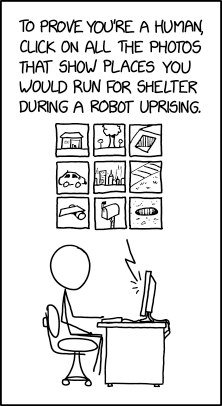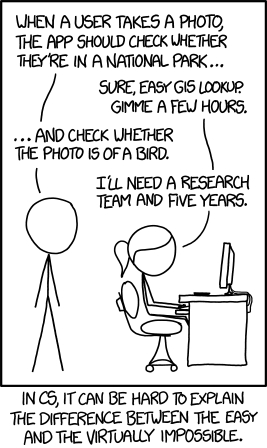RAG - Your AI's Personal Research Assistant
Retrieval-Augmented Generation(RAG), is basically what happens when you give an LLM its own personal research assistant. First cooked up by Facebook AI researchers back in 2020, RAG has quickly become the darling of applications where you absolutely need high accuracy or you are relying on real-time data (such as the news or stock market).
The magic behind RAG works in three simple steps:
- Your question gets processed and used to match for relevant information in a knowledge base
- The juicy bits of information get handed over to the language model as context
- The model crafts a response using this information
This approach tackles one of the biggest facepalm moments with LLMs - their tendency to confidently make up facts when they don't know something!🤦🏻♀️ It's like that friend who never admits they don't know and instead spins an elaborate story. By grounding responses in actual retrieved information, RAG systems dramatically reduce these "creative interpretations" and can actually point to their sources.
The cool thing about RAG is that it's not just about accuracy. These systems can stay up-to-date with fresh information without having to retrain the entire model (let's face it, GPUs are expensive). They're also more transparent since you can peek behind the curtain to see which documents the system consulted for an answer.But it's not all sunshine and rainbows. RAG systems have their own headaches. You need to carefully curate and update the knowledge base (garbage in, garbage out), build effective retrieval systems via similarity search algorithm that can find the right information even with vague questions, and figure out what to do when different documents contradict each other. Plus, they tend to be less creative and more constrained than their freewheeling generative cousins - more like a cautious lawyer than a creative writer.
Agentic Models - The AI Sherlock
While RAG systems are busy hitting the books, agentic models are more like AI Sherlock - they're all about taking action and solving problems. These systems don't just answer your questions; they roll up their virtual sleeves to take actions, using tools, and adapting to accomplish whatever task you've set for them.
What makes an agentic model work? It's a combination of some pretty nifty capabilities:
- Planning: Breaking down "make me a marketing strategy" into actual actionable steps
- Reasoning: Making logical leaps and decisions based on what they know (or think they know)
- Tool use: Grabbing calculators, APIs, web browsers, and whatever else they need to get the job done
- Learning: Getting better at tasks by remembering what worked and what faceplanted last time
These AI problem-solvers shine when things get complicated. Imagine having an AI data science assistant that doesn't just stare blankly at your CSV file but actually interprets and analyzes it, creates suggestions that make sense, spots the weird outliers - all without you having to spell out every tiny step along the way.
The real superpower of agentic models is their versatility and creativity in tackling open-ended problems. They can navigate through complex decisions, learn from feedback, and use a whole toolkit of resources to reach their answers. They're especially valuable when a task would otherwise need either multiple separate AI systems or a human babysitting the processs.
Of course, with great power comes... a whole bunch of new problems to solve. These models need robust ways to handle failures (because they will happen), careful guardrails to prevent unintended consequences, and sophisticated monitoring to keep track of their decision-making. They're also typically more complicated to build and maintain than their simpler cousins - think sports car vs. bicycle maintenance schedules.
So which one should you pick?
So you're standing at this AI architecture crossroads, RAG in one hand, agentic models in the other, wondering which way to go. Let's break it down into some practical decision points:
When to pick each approach
Go with RAG when:
- You cannot afford to make stuff up (think medical info or legal advice where hallucinations could land you in hot water)
- Your app needs to know very specific domain knowledge (like a technical support bot that needs to quote the exact manual)
- You need to show your receipts (i.e., cite sources for every claim)
- Your knowledge base is constantly evolving
- Your tasks involve multiple steps that need figuring out on the fly (like research assistance or coding)
- You need the AI to use external tools (calculators, web searches, data analysis tools)
- The problems you're tackling are open-ended with many possible solutions
- Creativity and adaptability matter more than perfect factual accuracy
What it'll cost you (resource-wise)
Both options come with their own price tags:
- RAG requires investing in a well-maintained knowledge base (which is not a set-it-and-forget-it situation)
- Agentic models need more sophisticated safety guardrails (because more freedom = more potential for chaos)
- RAG systems might hit your wallet harder on infrastructure costs due to all that retrieval processing
- Agentic models often demand more complex integration work with external systems and tools
Where you've probably seen them in the wild
Still confused? Here's where these approaches are already thriving:
- That super helpful customer support chatbot that knows exactly which page of the manual to quote? RAG.
- The AI assistant that helps data scientists analyze datasets and suggests visualizations? Agentic.
- Medical information systems that can cite specific research papers? Definitely RAG.
- Your AI productivity assistant that helps you draft emails, schedule meetings, and organize your life? Agentic.
Why not both? (The chocolate-and-peanut-butter solution)
Here's where things get interesting. More and more AI developers are discovering what the makers of Reese's figured out long ago - sometimes two great things are even better together. Hybrid systems that combine RAG and agentic capabilities are becoming the new hotness, letting AI systems look up information when needed but also reason about it and take action. It's like giving your AI both superpowers at once - the factual accuracy of RAG with the problem-solving skills of agentic models.
Picture an AI research assistant that can search academic databases to find relevant papers (that's the RAG part), analyze patterns across those papers, identify gaps in the research, and then synthesize all this into a coherent literature review (that's the agentic part). It's like having both a lawyer and a research partner rolled into one AI package.

Building these hybrid systems is definitely more complicated - it's like trying to design a car that's also occasionally a bike. You, the human, need to figure out when to switch between retrieval and reasoning modes, how to maintain a coherent flow between these different processes, and how to optimize for both factual accuracy and problem-solving efficiency. In other words, it is an art form!
The most significant advances will likely come at the intersection of these approaches, with systems that can seamlessly blend knowledge retrieval, reasoning, and action in ways that amplify their respective strengths while mitigating their weaknesses. As you evaluate which approach is right for your specific needs, remember that the choice isn't necessarily binary. Consider starting with the simpler approach that addresses your core requirements, with the flexibility to incorporate elements of the other as needed. The right architecture is ultimately the one that best serves your users and meets your specific use case.
REFERENCES
[1] Lewis, P., et al. (2020). Retrieval-Augmented Generation for Knowledge-Intensive NLP Tasks. Advances in Neural Information Processing Systems, 33.
[2] Yao, S., et al. (2023). ReAct: Synergizing Reasoning and Acting in Language Models. International Conference on Learning Representations (ICLR).
[3] Nakano, R., et al. (2022). WebGPT: Browser-assisted question-answering with human feedback. arXiv preprint arXiv:2112.09332.
[4] Schick, T., et al. (2023). Toolformer: Language Models Can Teach Themselves to Use Tools. arXiv preprint arXiv:2302.04761.
[5] Huang, W., et al. (2022). InstructGPT: Training language models to follow instructions with human feedback. arXiv preprint arXiv:2203.02155.
